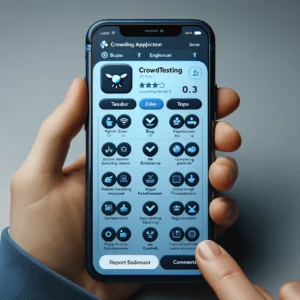Introduction: The Intersection of Remote Work and Application Testing
In a world where remote work and application testing are becoming increasingly intertwined, the demand for competent leadership in virtual teams has never been more significant. For modern organizations, remote work is often a necessity rather than a choice. Application testing, similarly, is an indispensable process that ensures the functionality, security, and user-friendliness of software applications. While remote work affords the luxury of geographic flexibility and a wide talent pool, it also poses its own set of unique challenges. These challenges include, but are not limited to, obstacles in effective communication, team cohesion, and productivity assessment. This comprehensive guide aims to arm you, the virtual team leader, with practical strategies, tools, and cultural initiatives to navigate these complexities. By the end, you’ll be well-equipped to manage a virtual team effectively, particularly in environments where application testing is a major focus.
The Challenge Quotient: Dissecting the Peculiarities of Virtual Teams in Application Testing
Virtual teams in the context of application testing have an even more complex layer of challenges. Remote work conditions inherently make it more difficult to establish clear communication pathways. The digital environment often lacks the nuances of facial expressions and tones, complicating interpretation of messages. This becomes even more significant when we talk about application testing, where precise communication about software bugs, performance metrics, and timelines is crucial. Team members spread across time zones can slow down real-time collaboration, affecting the efficiency of the testing process. Additionally, the lack of physical interaction can impact team morale, making members feel isolated or disconnected. It’s also worth mentioning that in a traditional office setting, it’s easier for a leader to assess how effectively the team is carrying out their application testing duties. In a remote environment, however, a more intricate approach is needed to gauge productivity.
Effective Strategies: Enhancing Communication and Engagement
In the realm of application testing, miscommunication or delays can result in software bugs going unresolved or even unnoticed, posing potential risks to the end-users. Employing multi-faceted communication tools such as Slack and Microsoft Teams can mitigate these issues. These platforms provide an all-in-one solution for instant messaging, video conferencing, and document sharing, thus making it easier for virtual teams to collaborate on application testing tasks effectively. Consistency is key when it comes to team engagement. Regular check-ins or one-on-one meetings can help maintain a constant feedback loop, making it easier to preempt any challenges before they escalate into real issues. For teams focused on application testing, these check-ins can also serve as an opportunity to track the progress of different testing phases and to adjust strategies as needed.
Tools of the Trade: Streamlining Application Testing Operations
Managing virtual teams engaged in application testing requires an arsenal of specialized tools that go beyond mere communication. Asana and Trello are platforms where tasks can be assigned and monitored in a structured manner. For application testing, these tools allow for a systematic breakdown of testing objectives, delegation of specific testing roles, and real-time tracking of bug resolutions and software improvements. Time-tracking software like Time Doctor can be invaluable in understanding how each team member is dedicating their time, specifically during testing phases. Security can’t be neglected either. Virtual Private Networks (VPNs) are essential in ensuring that all members can securely access the testing environments, irrespective of their geographical location.
Cultivating a Positive Team Culture
To operate a successful remote team, especially one focused on application testing, you’ll need to foster a positive work culture. Flexibility can be a valuable asset; allowing team members some leeway in their work hours can foster a better work-life balance, ensuring they are more focused during the testing process. Acknowledging and rewarding exceptional performance, be it in code quality or bug detection, can significantly enhance team morale. An open-door policy for all team members facilitates transparent communication, thereby helping to solve issues more efficiently.
Conclusion
The art and science of managing a virtual team, particularly in the specialized field of application testing, requires a nuanced understanding of both the challenges and the solutions. Communication and collaboration tools, regular check-ins, and an arsenal of specialized testing tools are fundamental to effectively managing remote teams. The added layer of fostering a positive team culture cannot be overlooked either. By implementing the strategies, tools, and practices outlined here, you’ll not only navigate the challenges but also enhance the strengths inherent in remote teams. In doing so, you can set your team up for success, ensuring efficient and effective application testing cycles.





